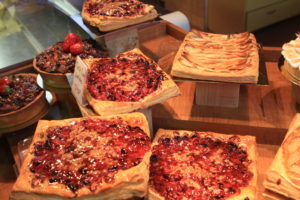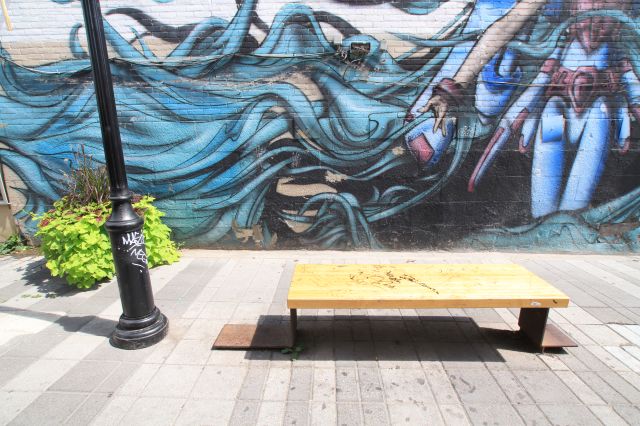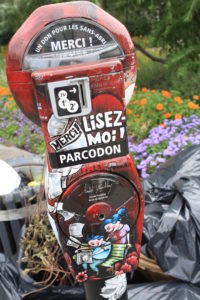 I had thought we were going to be staying in Old Montreal and since it had been so long since I had been to this old world Canadian city, I didn’t remember the layout, the nuances, the differences between old and new or as I later learned after being there for several days, east versus west.
I had thought we were going to be staying in Old Montreal and since it had been so long since I had been to this old world Canadian city, I didn’t remember the layout, the nuances, the differences between old and new or as I later learned after being there for several days, east versus west.
We ended up at Hotel St. Germain, smack in the middle of downtown, surrounded by more shops, cafes and bars, not quaint bistros and renown restaurants. The hotel itself was urban and modern in every way and the service was out of this world and frankly, given that we were there to attend a series of festivals, we couldn’t have been more centrally located. As a base, it served as as an interesting way to learn the city…by foot and by bike, because the property was located at the end of President Kennedy Street, which turned into Rue Ontario as you headed up into the neighborhoods.
Streets randomly changing names as you meandered north, south, east and west isn’t uncommon in Montreal and you never quite know when the name is going to change, which makes exploration a challenge at times, but also an adventure, particularly if you’re on bike. When I say heading up into the neighborhoods, I literally mean just that – up. The hills are small in comparison to San Francisco’s steep slopes but there are a lot of them, tough climbs if you don’t do it that often or are on a Bixi bike, which is much heavier than your standard city road bike.
Bixi is a concept that I didn’t think I’d like or use when I first arrived. The idea is simple. Pay $5 or $12 and you can take any bike from a Bixi stand with a key, ride it around for a half an hour, dock it at another bixi stand and then take another one. Initially I thought the idea was ridiculous – why would you want to dock a bike every 30 minutes or figure out where to dock it along the way? Wouldn’t it take longer than 30 minutes if you wanted to explore the city and how would you know that there’d be a bixi stand where you needed one when you were ready to get rid of the bike?
Luckily, there’s an iPhone app that tells you where the closest docking station is, updated in real time with how many available bikes and free docks there are and if you struggle with the app or don’t have an iPhone, you can ask people on the street and many of them can point you in the right direction. Bixi is really designed for commuters not for tourists, but I was surprised just how hooked I got on the freedom jumping on and off a bike frequently throughout the course of the day. See Bob’s extensive write-up on Bixi here. 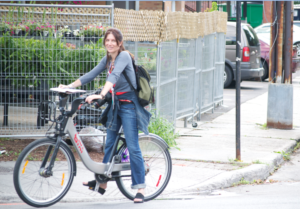
It’s easy to get hooked in a city like Montreal because there’s so much to explore and doing so by bike is really the way to go when the weather is on your side, which it often is during the summer months. Many of the roads were sectioned off because of the countless festivals that were going on over the course of an entire month, which meant that on any given night, the streets were vibrant and alive. Not far from the hotel was Place Des Arts, where many of the performances were taking place and to the north sits a massive park: Parc au Mont-Royal, which was lush and green when I was there in late July. The city is not short on parks, with Parc Westmount, Parc de l’Aqueduc de Montreal, Parc Summit, and Parc King George in the west. While the west was less quaint, it had its own hidden secrets, such as industrial Griffintown.
It felt like I met more French natives living in Montreal than Canadian ones and all of them had a thing about the west side of the city, which one 30 something year old said was very English. “Let me show you the east side,” he said with a grin and a smile, as if the smile said it all. The east side of course would have more character, be more genuine and of course be full of people who spoke more French than English. Some felt as if the French language was being threatened and they were fighting to keep it alive with the growing use of English, something I also felt despite the fact that I heard French spoken everywhere.
As you head east, things do get a little more diverse, with China Town (Quartier Chinois), just slightly east of Rue St. Urbain. To the north of the Latin Quarter sits Square Saint Louis and to the south, a busy metro area where many events took place: Berry Oqam, a massive train stop, the same one you take over the water to Parc Jean-Drapeau, which houses the annual Osheaga Music Festival every summer. One stop outside of the city and you’re in a different world. South of Berri Oqam is old Montreal which is spread out on various streets which line the Saint Laurent River.
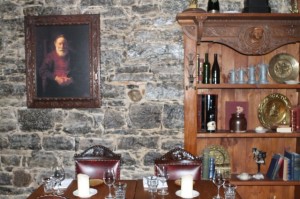 One of my favorite streets, Rue St. Paul is coated with cobblestones and one quaint restaurant after another, each one tempting you to come in for some old Montreal, which often includes French wine, foie gras, pates and duck tartare. Rue Saint Denis is another one of my favorite streets, which starts out in Old Montreal and makes its way north, a great run on a bike. Like all the streets heading north (Rue Sainte Catherine, Rue Berri and Rue Saint Hubert (gorgeous townhouses with unique colorful details and neighborhood sidewalks – got lost on this street on more than one occasion), the architecture and ambiance changes as you make your way further north into more authentic neighborhoods, where diversity reigns. Rue Sherbrooke divides some of this energy smack in the middle of the city, which has its own assets if you pay attention carefully.
One of my favorite streets, Rue St. Paul is coated with cobblestones and one quaint restaurant after another, each one tempting you to come in for some old Montreal, which often includes French wine, foie gras, pates and duck tartare. Rue Saint Denis is another one of my favorite streets, which starts out in Old Montreal and makes its way north, a great run on a bike. Like all the streets heading north (Rue Sainte Catherine, Rue Berri and Rue Saint Hubert (gorgeous townhouses with unique colorful details and neighborhood sidewalks – got lost on this street on more than one occasion), the architecture and ambiance changes as you make your way further north into more authentic neighborhoods, where diversity reigns. Rue Sherbrooke divides some of this energy smack in the middle of the city, which has its own assets if you pay attention carefully.
The problem with living on a bike for hours on end if you’re as passionate about photography as I am, particularly when you’re doing so many hills, is that you tend to avoid stopping as much as you would if on foot. When you’re on foot, your nose brings you deep into alleyways. I loved Rue Prince-Arthur which was full of cute restaurants and cafes that are great for a coffee, but double check the freshness of the foot. Many of them look better than they taste (two Greek cafes in a row disappointed as did a Lebanese wrap on Boulevard Saint Laurent not far away). There is some great shooting in this neighborhood by food, particularly if you take the time to meander into alleyways and look up as much as you do in front of you.
Another great ride on the East Side, where you feel the French influence is up Avenue Papineau or Rue St. Hubert until you get to Parc La Fontaine, a quaint park that isn’t particularly special, but a great stop over to have a picnic or just people watch. There’s also a Bixi docking station where you can get rid of the bike on Sherbrooke on the eastern southern corner. Meander through the park and as you come out on Rue Rachel to the north, head west until you hit Rue de Mentana, Rue Saint-Andre or Rue Saint-Hubert and head south about a block until you hit Avenue Duluth, the home of one of the best restaurants in the city: Pied de Cochon, a must do for multiple reasons. There’s one orgasmic dish after another and while it’s fabulous to visit in a group so you can share the $37 a plate infamous Duck in a Can (note: large portion), going alone is also special since you can sit at the bar which faces the kitchen. Here you can watch one dish after another be prepared in front of your eyes, which in my case, meant that I wanted to order than I originally intended since I fell in love with everything on the menu. See my write-up of the restaurant here.
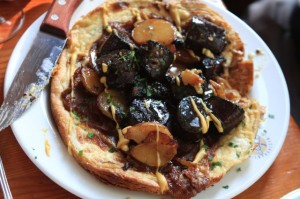 Rue Duluth is quaint to down through even if you skip Pied de Cochon, a tough choice if you’re vegetarian for example. Streets on both sides of this cobblestreet alleyway greet you with as much surprise as Duluth itself and the whole area is nothing short of charming. Note that if you do want to take in Pied de Cochon, note that there is also a Queue de Cochon, which we biked to first by accident, only to discover a deli, not a restaurant. It was hard not to see it as amusing despite the fact that it probably took more than 45 minutes with our diversions to get to the Montreal suburb area known as Rosemont.
Rue Duluth is quaint to down through even if you skip Pied de Cochon, a tough choice if you’re vegetarian for example. Streets on both sides of this cobblestreet alleyway greet you with as much surprise as Duluth itself and the whole area is nothing short of charming. Note that if you do want to take in Pied de Cochon, note that there is also a Queue de Cochon, which we biked to first by accident, only to discover a deli, not a restaurant. It was hard not to see it as amusing despite the fact that it probably took more than 45 minutes with our diversions to get to the Montreal suburb area known as Rosemont.
A unique find is a place called Eva B, a mishmash of pretty much everything you can think of except for appliances, electronics and household items and even then, you may find something under a stack of clothing. I discovered it as I was breathing heavily making the trek up Rue St. Laurent; the hill was brutal on that hot 88 degrees day.
On the right on my way up, I saw a shop that looked like it came out of Old World Eastern Europe with battered luggage sitting outside and funky materials latticed across the top of the window. A man with a snake around his head greets you upon entry (they even let us put our bikes in the shop while we explored), and signals to one of his staff to bring us tea. Special yummy tea with mint arrives and if you want more, they sell samosa-type snacks for about a $1 a pop on their nearby counter, which is so full of other things, you could easily miss the food. The eclectic busy and artistic nature of the shop is what draws you in since there’s no sign, at least none that I could see and I went back twice.
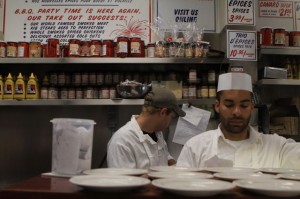 Keep going and take in the infamous Schwartz’s Deli, which always has a line out front regardless of what time of day. If you’re a New Yorker and know your Jewish delis, you may not be as impressed, but its about as authentic as it gets even though I had to chuckle at the fact that there was an Indian guy behind the counter serving food.
Keep going and take in the infamous Schwartz’s Deli, which always has a line out front regardless of what time of day. If you’re a New Yorker and know your Jewish delis, you may not be as impressed, but its about as authentic as it gets even though I had to chuckle at the fact that there was an Indian guy behind the counter serving food.
There is a market culture in Montreal, but it’s mostly produce and fresh food, since Montreal is more of a foodie culture than it is a craft and art culture, even though there are plenty of art galleries and antique stores to be found. In Old Montreal, there are outside stands set up on the main central square where you can order ice cream, savory and sweet crepes and even hot dogs if your taste warrants it. Expensive shops with original Canadian designs, mostly French style, can be found many of the side streets.
For foodies, take in a few food markets: Atwater Market, the Maisonneuve Market, Lachine Market and Jean-Talon Market. Atwater Market is two long floors of indoor shops with stalls lining the lower outside sidewalk. Upstairs there are mainly butchers and a couple of general-food stores, while downstairs there’s a beer store and the amazing Les Douceurs du Marché.  It’s not far from Notre Dame and our pals over at Fait Ici told us about it, huge believers and supporters of organic produce. (try their homemade lemonade with mint).
It’s not far from Notre Dame and our pals over at Fait Ici told us about it, huge believers and supporters of organic produce. (try their homemade lemonade with mint).
The Maisonneuve Market is housed in a beautiful beaux-arts-style building in the city’s Hochelaga Maisonneuve neighbourhood to the east. From August to October, it also features “Samedis Bio” (Organic Saturdays), offering patrons health-conscious harvests, which is something I observed as a growing trend in the city.
Jean-Talon Market is located in the north, smack in the middle of Montreal’s Little Italy. It is 5 minutes north of the city by car or you could try it the way we did….40 minutes up some long hills by bike – you’ll feel less guilty about ordering the crepes and chocolate when you arrive if that’s your choice.
The historical La Difesa church is also near the market, which opened in 1919 and was interestingly enough named after a miracle, which happened in Casacalenda (Campobasso) Italy, in a place called “La Difesa”. Be sure to check out the incredibly beautiful fresco decorations by painter Guido Nincheri (1885-1973), take a meander through nearby Dante Park, which is named after the Italian poet Dante Alighieri, the father of the Italian language. Also closeby is La Maison d’Italie built in 1936 by architect Patsy Colangelo, which is the heart of many socio-cultural events.
Jean Talon Market doesn’t just offer Italian cuisine – far from it. While you may be able to buy some Italian parsley and olive oil, there’s a ton of fresh produce, French-influenced cuisine including a shop that sells foie gras, calamari and other fresh fish, not to mention an amazing oyster stand ($2 and $3 a pop depending on what region you choose – OH so fresh and they’re not, they ditcht hem before your eyes and open another one).
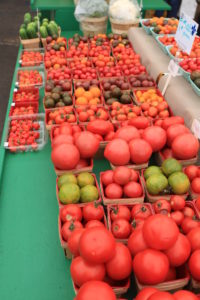 I also ordered sausage on a stick at a Romanian stand, which included the best cuts of beef, pork and lamb. It was so tender that it didn’t require a sauce or salt and pepper.
I also ordered sausage on a stick at a Romanian stand, which included the best cuts of beef, pork and lamb. It was so tender that it didn’t require a sauce or salt and pepper.
Another favorite street of mine is St. Laurent Boulevard, for when the female shopper in me comes out. Here, you can discover fabulous Italian clothes and shoes (I got a crazy deal when I was there – $66 for a $295 pair of designer shoes). I left with a smile and a meeting with a shopper who wants to contribute to We Blog the World. Another great place for clothes and accessories is Lyly Ka on 350 Rue St. Paul Est. (lots of classic wool sweaters & leather bags here).
The smallest but oldest of Montréal’s four public markets is the Lachine Market which specializes in cheeses and breads and fresh fruit and vegetables.
I’d be negligent if I didn’t mention the generosity of people in general and the fact that the men of Montreal go out of their way to make sure you’re “taken care of,” whether that’s directions, an electric warm smile or old fashioned gestures, such as opening the door, giving you a lift, taking the time to make sure you have what you need and a whole lotta attention.
American men could learn a bit about the chivalry they left behind in the last generation, sadly a result of our culture emasculating them (in my humble opinion). In Montreal, I felt like a woman. In the states, I feel like a buddy. We all want a buddy in our partner, but I for one, don’t want to “feel” like a buddy. There’s a difference and women know when they feel the former. In Europe and recently in Montreal, I felt like a woman and was treated like one.
Beyond Montreal men, the charm of Montreal keeps going, whether you head north or south, west for some graffiti or east for neighborhood banter, there’s always something to catch your eye, or ear when there’s a festival going on, which is often in the summer.
Graffiti is something I’ve always been curious by and one of those rare people who see it as a form of art, particularly as it relates to culture. There’s no question that there’s a ton of bad graffiti out there which gives graffiti artists a bad name, but the more creative stuff adds to the city’s splendor in my opinion when its done well and thoughtfully placed. In other words, its not destroying another piece of art or getting in the way of it, whether it’s a building, sidewalk or vehicle.

Renee Blodgett is the founder of We Blog the World. The site combines the magic of an online culture and travel magazine with a global blog network and has contributors from every continent in the world. Having lived in 10 countries and explored nearly 80, she is an avid traveler, and a lover, observer and participant in cultural diversity.
She is also the CEO and founder of Magic Sauce Media, a new media services consultancy focused on viral marketing, social media, branding, events and PR. For over 20 years, she has helped companies from 12 countries get traction in the market. Known for her global and organic approach to product and corporate launches, Renee practices what she pitches and as an active user of social media, she helps clients navigate digital waters from around the world. Renee has been blogging for over 16 years and regularly writes on her personal blog Down the Avenue, Huffington Post, BlogHer, We Blog the World and other sites. She was ranked #12 Social Media Influencer by Forbes Magazine and is listed as a new media influencer and game changer on various sites and books on the new media revolution. In 2013, she was listed as the 6th most influential woman in social media by Forbes Magazine on a Top 20 List.
Her passion for art, storytelling and photography led to the launch of Magic Sauce Photography, which is a visual extension of her writing, the result of which has led to producing six photo books: Galapagos Islands, London, South Africa, Rome, Urbanization and Ecuador.
Renee is also the co-founder of Traveling Geeks, an initiative that brings entrepreneurs, thought leaders, bloggers, creators, curators and influencers to other countries to share and learn from peers, governments, corporations, and the general public in order to educate, share, evaluate, and promote innovative technologies.

